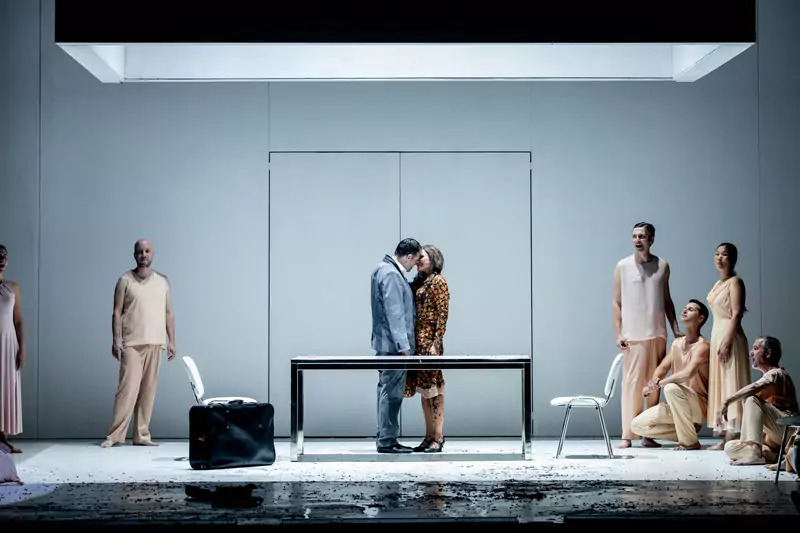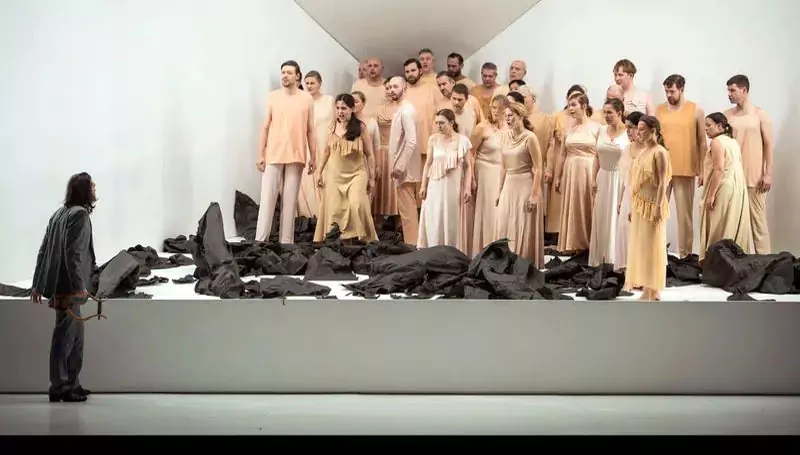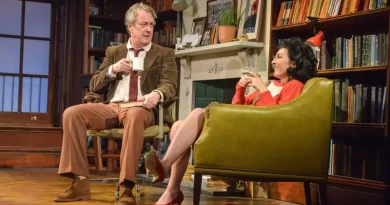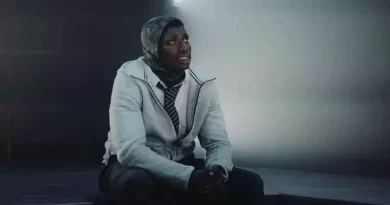“Orfeo ed Euridice” at Spoleto Festival of Two Worlds
Annie Loui in Perugia, Italy
6 July 2024
The Festival of Two Worlds in Spoleto has kicked off with a modernized staging of the 1762 Gluck opera Orpheus and Eurydice in a co-production with the Komische Oper Berlin at the Teatro Nuovo Gian Carlo Menotti.
In this innovative re-imagining by the Italian director Damiano Michieletto, the music soars and the staging takes the classical myth of determined love shattering the barrier between life and death into contemporary allegories. Orpheus and Eurydice (played by the excellent Raffaele Pe and Nadja Mchantaf) confront each other during the overture in a scene of intense anguish, suitcase at hand anticipating separation.
We descend not into the underworld, but into an interminable waiting room of a hospital peopled with patients in ward gowns, nurses, and visitors, all in shades of grey. They reveal a gurney and bed with Eurydice balanced between life and death. And we follow Orpheus as he is guided by Love to pursue Eurydice to the world of the dead.
Countertenor Raffaele Pe solidly anchors the story as a desperate modern-day Orpheus. The Orchestra dell’ Accademia Nazionale di Santa Cecilia and the Vocalconsort Berlin are a flawless and committed vehicle for Gluck’s music. And despite a spectacular moving set of white walls in a world of hazy diffused light, the overall production takes some jarring turns and evokes a mixed response.
The role of Love is portrayed as a vaudevillian in sparkling coat and top hat orchestrating the action with a wink and a baton. There is a dance of four broken dolls representing
Eurydice; the dolls are repeatedly caught by a frantic Orpheus and propped back up. Ashes from an urn litter the stage, and water washes the lovers clean, but somehow the images don’t add up to a climactic build.
Contrasting these less successful moments are some impactful scenes: a reoccurring pair of Eurydices (one a singer, one a dancer) appear and disappear, and always turn away at the last moment, this being skilfully staged to great effect. One of the most powerful images is that of the inhabitants of the underworld writhing as black worms around Orpheus as the stage floor travels slowly towards the audience. This startling image of death and Orpheus’s impossible quest sung with pure tonality and insistent tempo demonstrates contemporary European opera at its most innovative and impressive.
Unfortunately, shortly afterwards Orpheus spends a very long time searching through discarded black shrouds until he finds Eurydice, and the drama of the plotline becomes lost in the device. The commitment of all the performers is exemplary, and the chorus is visually and vocally effective as ghostly inhabitants of the hospital and the underworld. We are left with some deeply effective staging moments, and some that are less well realized.
The overall effect is strong but the production somehow fails to have full impact despite the high quality of the music. I am glad I saw it at this stage of development, and hope the production is given opportunity to further refine its conceptual staging.

Photo credit: Andrea Veroni.









